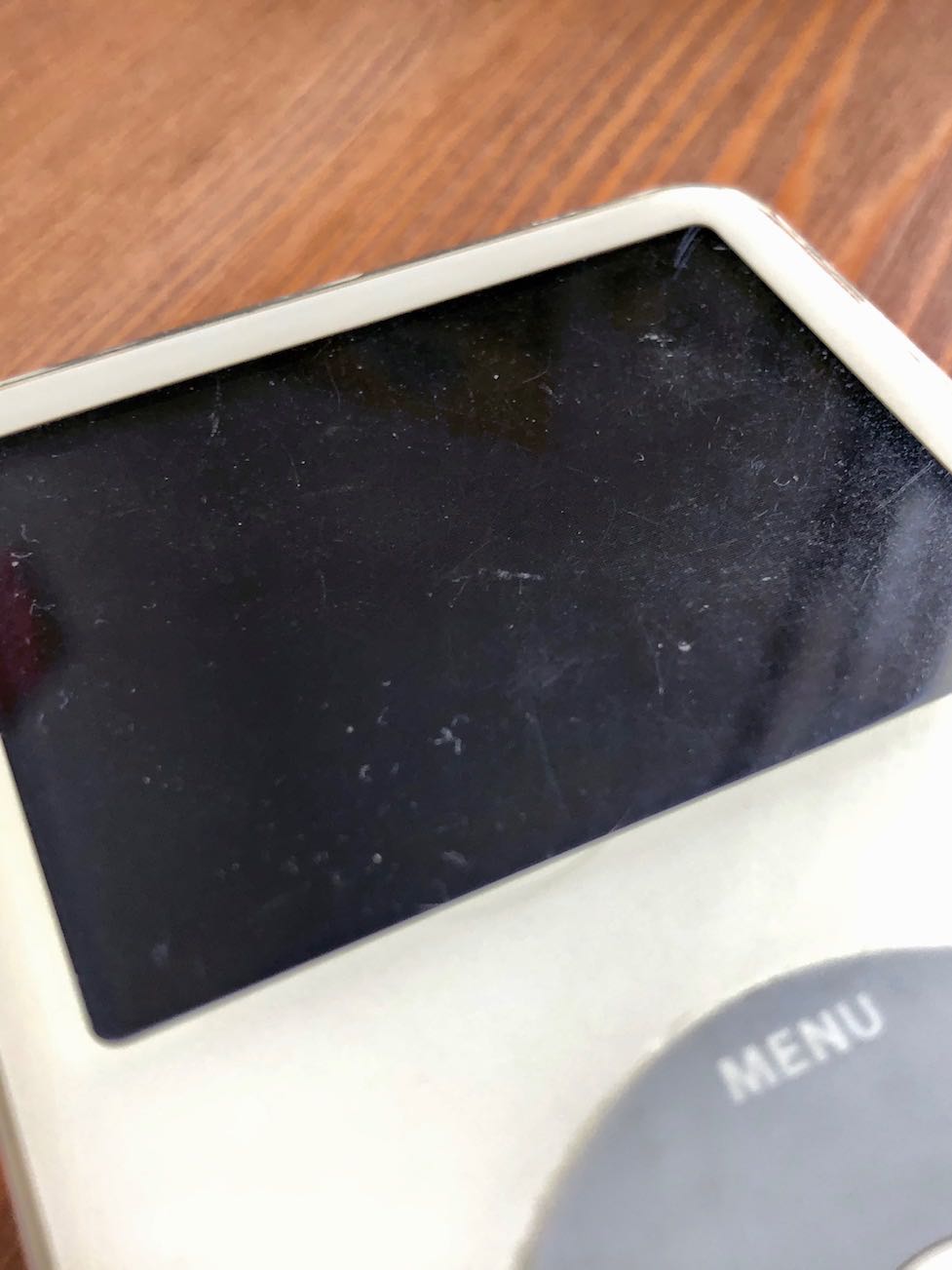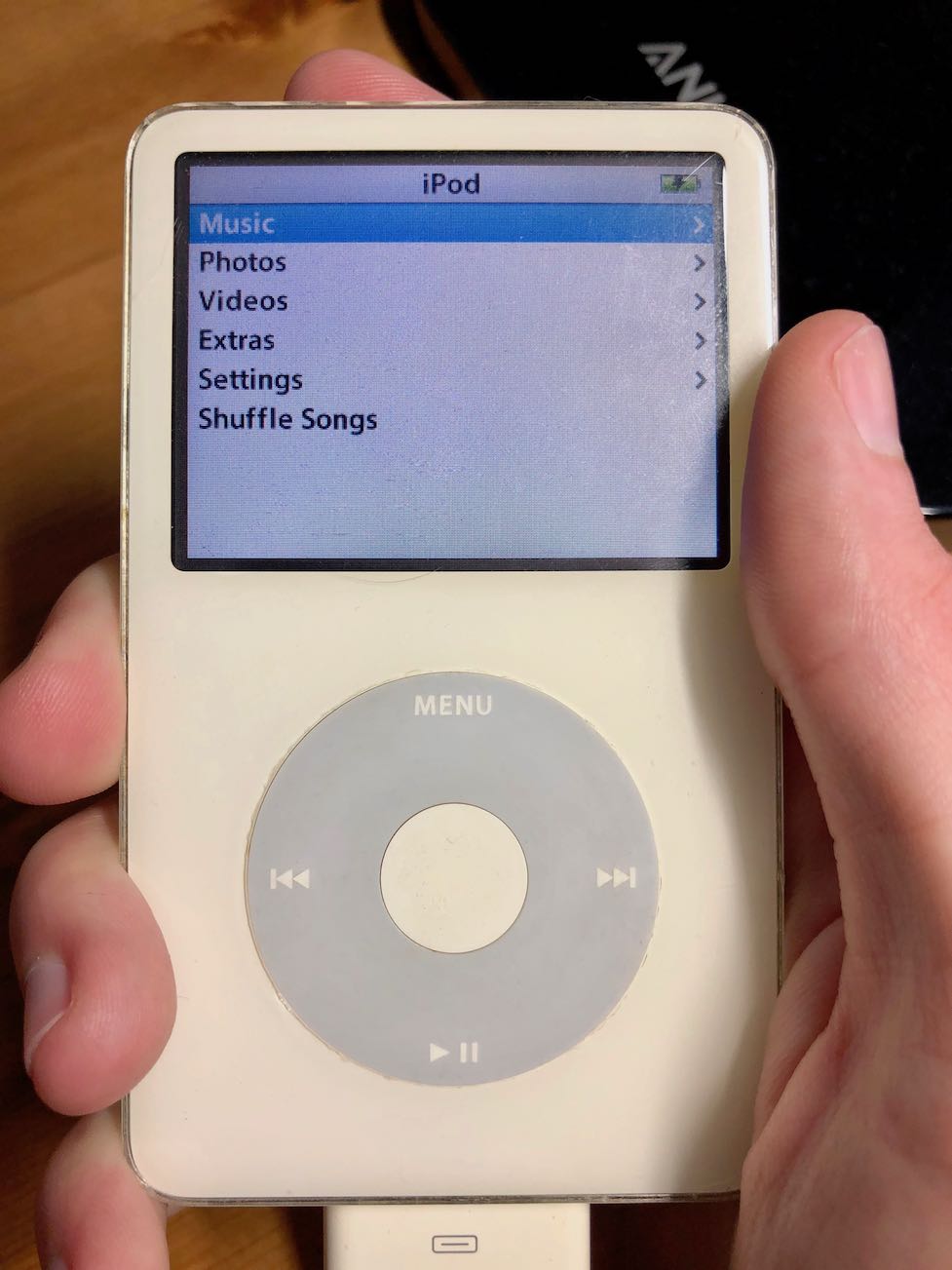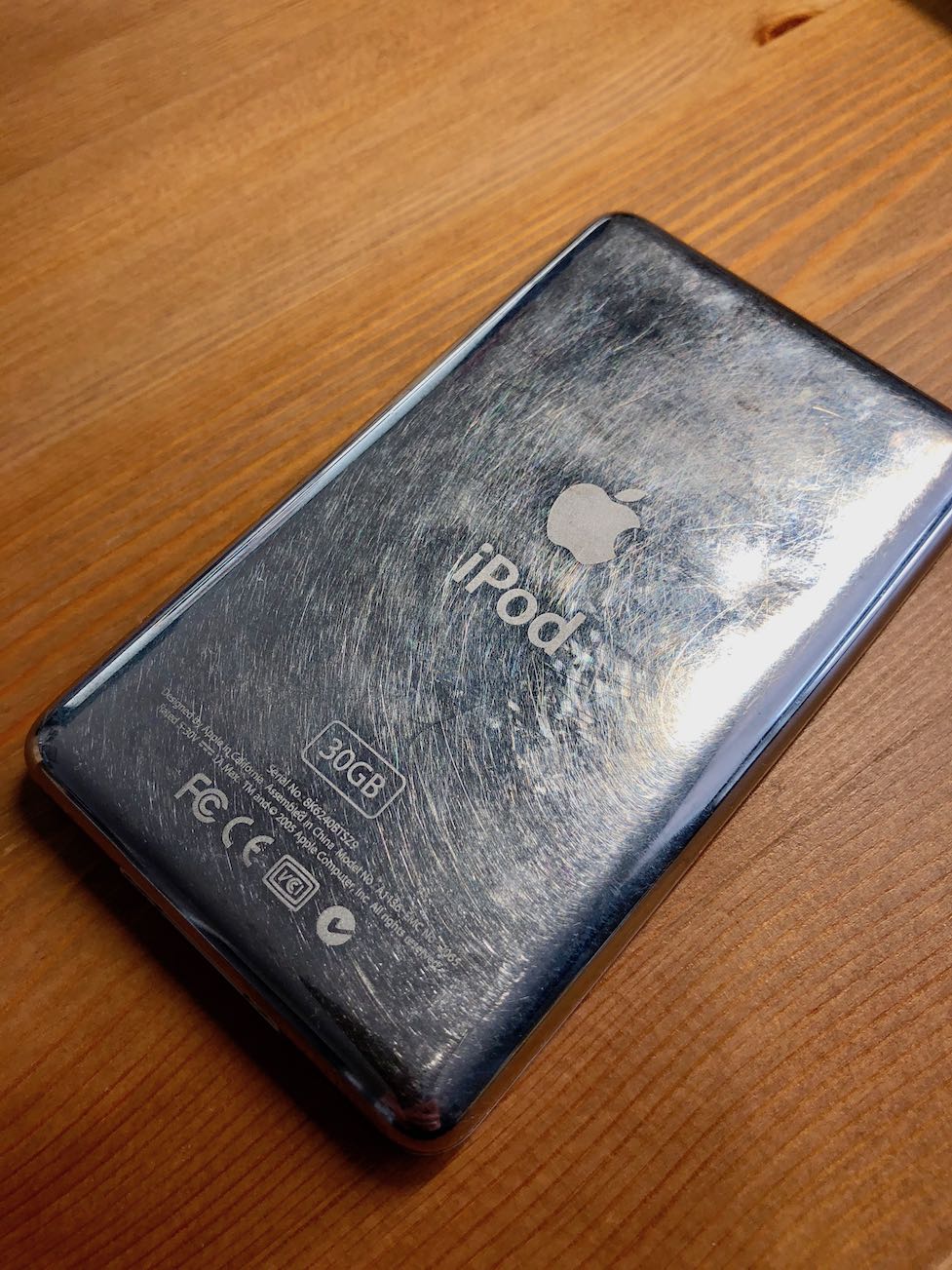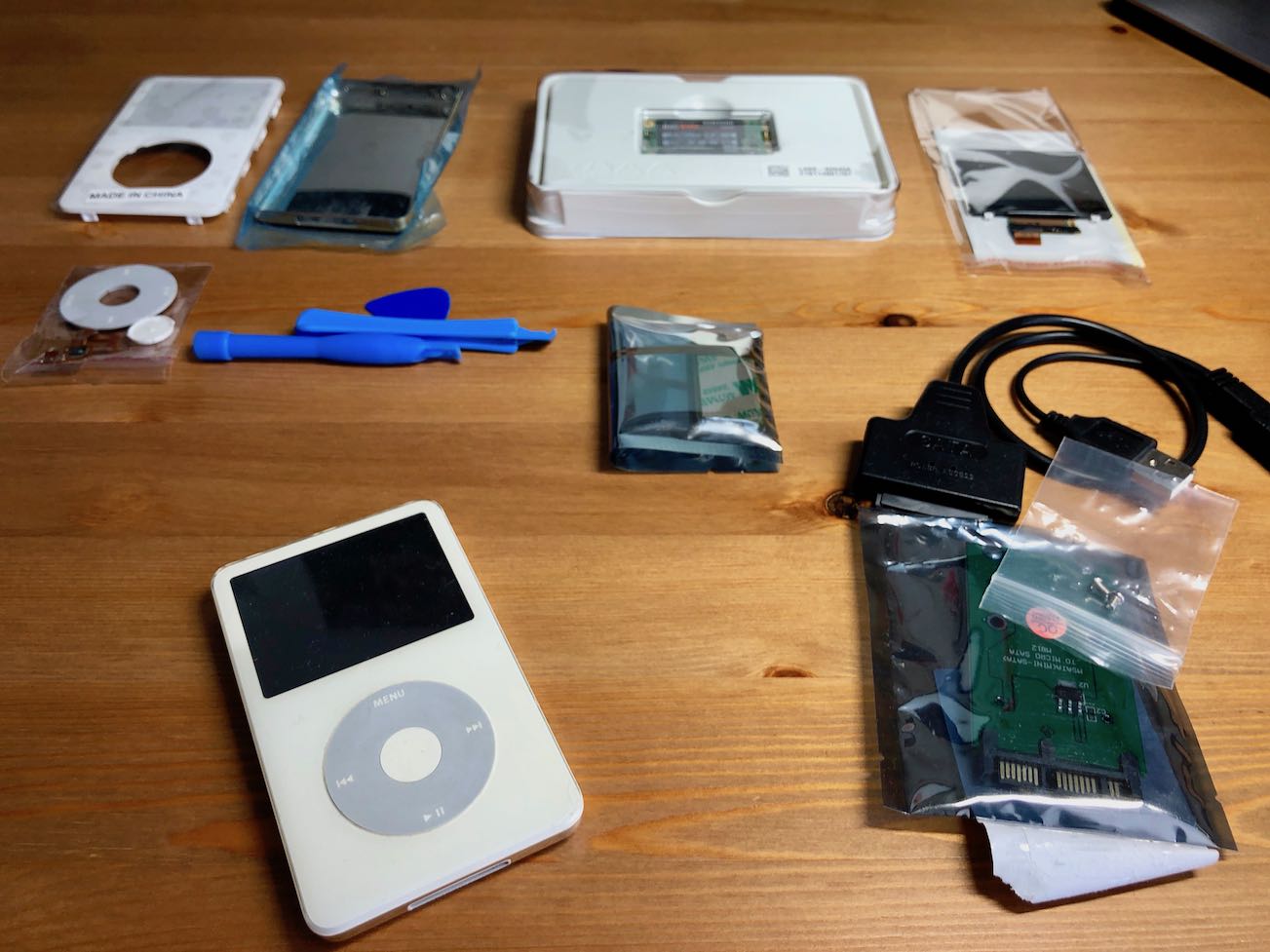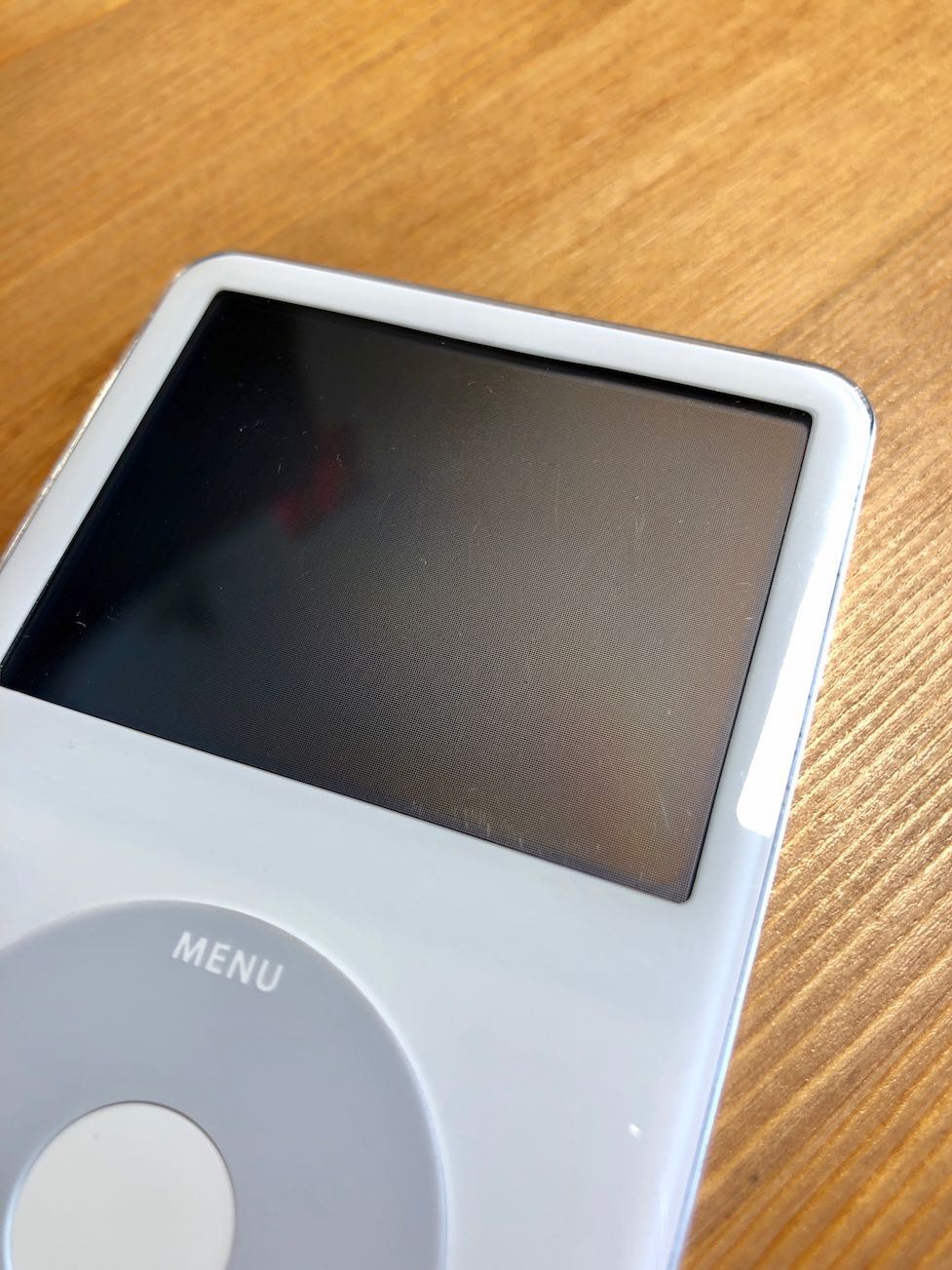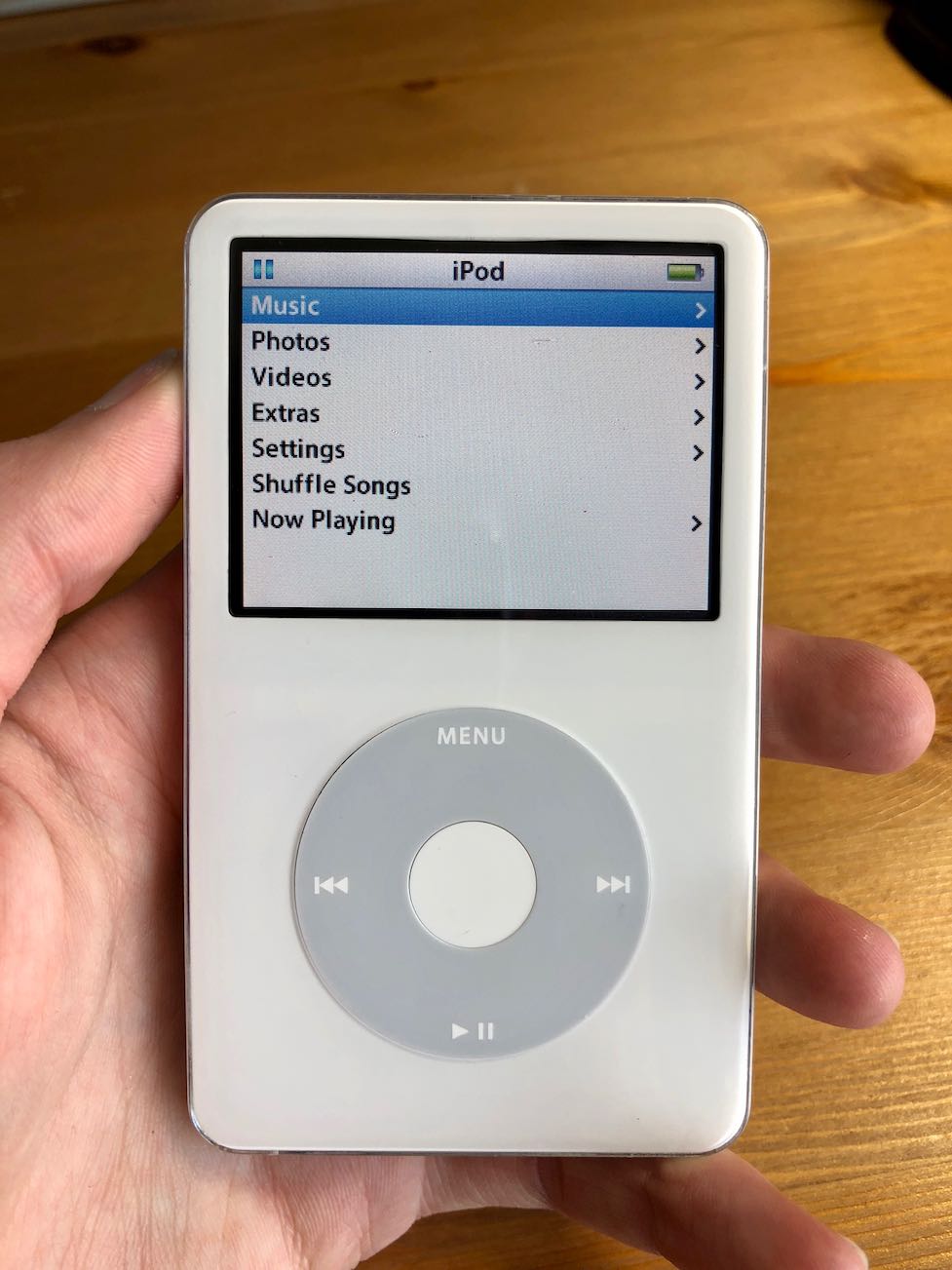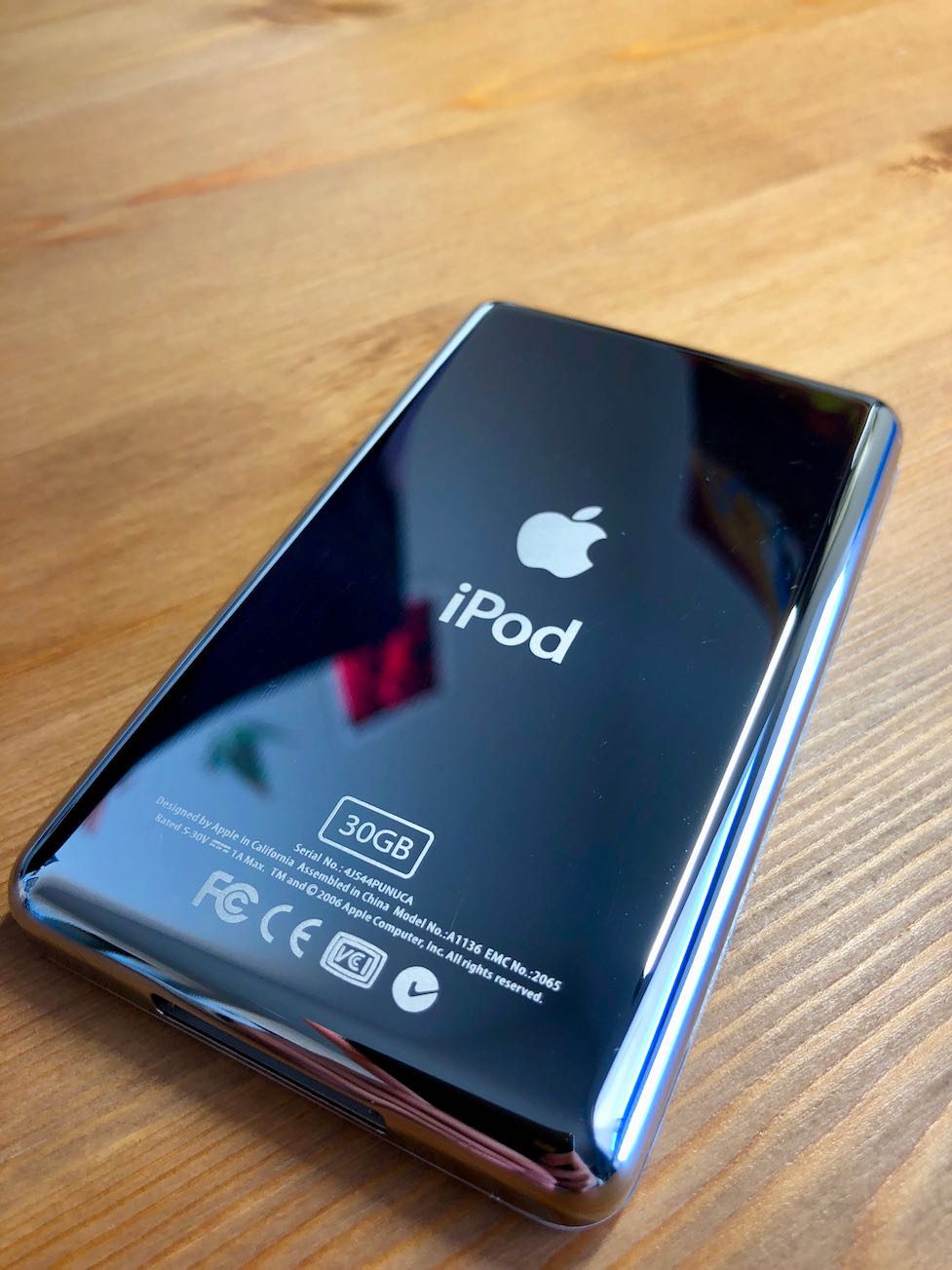Restoring my iPod Video
I still remember how thrilled I was the day I got my iPod Touch—or more specifically, how thrilled I was I could finally dump my old iPod Video. Besides the strict technical upgrade, after four years of hard but loving use, my iPod Video was showing its age. The battery hardly lasted an hour on a single charge (even with the screen brightness turned completely down). The once-gloriously shiny metal back was now dull and dented, and the infamously scratch-attractive screen was even worse, transforming its contents into a dim and smudgy mess that no amount of polishing could fix. The 30GB storage that once seemed as endless was practically bursting at the seams.
So, with the new iPod Touch in hand, I retired my iPod Video to the great “old electronics” drawer in the sky and didn’t look back.
Until last month.
As I touched on in my “Why Vinyl” article, I believe focus has tremendous value. In a day and age where practically all content ever created is just a few taps away from instant consumption, it’s practically impossible to sit down and truly enjoy any of it. Nowadays, I find myself incapable of sitting still and listening to music or watching a video. My hands absentmindedly move about refreshing Twitter, surfing reddit for stale memes, and all other sorts of time wasters that draw my attention away from whatever I originally set out to enjoy. I sometimes “snap back” only to find I couldn’t even remember what three songs I just listened to, or what happened in the episode I was supposedly watching. There’s simply too much self-inflicted mental noise.
Naturally, I made it a goal to combat this by surrounding myself with specialized tools that inherently keep distractions away. When I want to write, I write in notebooks. I can only do one thing with those notebooks, and that’s write. When I want to read, I read a physical book. I can only do one thing with that book, and that’s read. When I want to listen to music, I listen on my record player. I can only do one thing with that record player, and that’s listen to music. At least, if I’m at home.
The reality is, I’m not always at home. My life involves a lot of travel, and that record player isn’t available nearly as often as I want it to be. Sure, my flashy new iPhone X can play music just fine, but I quickly run into the same problem I faced before; my fingers start twitching, absentmindedly swiping around serving up an endless stream of distractions. If only there was some way I could get a portable dedicated music device.
The Restoration
As it turns out, I’m quite fortunate to have an old iPod Video lying around. Not only did Apple discontinue the “Classic” iPod line back in 20141, but used models still easily fetch their original 2005 sticker price of $399 due to their novelty and (supposedly) superior sound quality2.
With that said, there’s no way I could use it as-is. The deteriorated battery, tiny storage, and battered appearance was just too hard a pill to swallow. There was no doubt about it, a repair was required. However, if I was going to do a repair, I wouldn’t stop with just a simple restoration—oh no—I’d want a full “Pimp My Ride” upgrade, featuring an improved screen and massive SSD with enough space for all the music I’d ever own in my lifetime. Excited at the prospects, I jumped right in.
The initial fruits of that jump was a month long slog of buying and tracking a dozen various components through the mail, ultimately spending nearly as much as I would have if I had just bought a new old stock model in the first place. I had even mistakenly omitted a critical component in my original orders (the convert card for the new SSD), which further delayed the restoration. This is where I learned my first repair lesson:
- Be prepared to spend more than you think you will (the component costs add up)! If you don't think you'll have fun with the repair itself, do yourself a favor and just buy a refurbished or old new stock model and safe yourself the time and trouble.
Repair companies offset this cost by buying old models from customers when they’re at their cheapest (or obtaining models for free as recycle donations) and buying materials in bulk. For one-off projects such as this, however, you most likely already missed the boat on the cheapest used models and most likely aren’t buying parts in bulk, so you can expect to pay more than the shops do. To give you an idea of what to expect, the whole repair cost me about $250.
When all required components finally arrived, I excitedly leapt right into the repair with only a passing glance at the iFixit repair guide. This is where I learned my second repair lesson:
- Don't do that.
In my impatience, I neglected to read ahead and see the big, red warning section telling me to take it slow and “don’t completely separate the two halves”. In my carelessness, I ended up accidentally ripping off the front cover, bringing two, torn paper-thin ribbon cables along with it. This let me enjoy an additional week of agony for those replacement parts to arrive, much to my chagrin.
Finally, after the additional replacement parts arrived, I carefully proceeded with the repair. This time, I successfully completed it, with only the validation left to go before sealing the unit back up. That’s when I found out I could only play audio out of the right channel; the replacement headphone jack (which was the component I accidentally mutilated earlier) was faulty.
Thus began yet another week-long wait for an additional component to arrive, which leads me to my final repair lesson:
- Learn to accept that your project can and will be blocked by actors outside of your control at various points, it's all part of the experience. Enjoy the wait, it gives you something to look forward to!
After all that, surely this time was a success, right?
The Results
Thankfully, after numerous fits and starts, the replacement audio jack did indeed work and I finally sealed the unit up. See the results for yourself!
The restoration didn’t only include a brand new shell and buttons to get back that wonderful “out of box” look, while I was inside I took the liberty of upgrading the screen to a noticeably brighter and higher quality panel. I also upgraded from the 30GB HDD to a speedy, more resilient 250GB SSD, eliminating moving parts that could easily wear or fail with time.
While I’m pleased with the final product itself, I haven’t been able to shake a feeling of melencholy I picked up from one particular replacement part I received. The reseller that supplied me various components for the repair sells the audio jack still attached to the original back casing of the iPod it came from (after all, why waste time taking it out if nobody wants to buy a used, scratched-up back plate?). As I was doing to repair, I found this etched on the back of the casing that was sent with mine.
It was a cold reminder the iPod I was greedily scavenging like a Jawa once belonged to someone, and in this case was a loving gift (and remember, an expensive gift at the time). While I finished up the repair, my mind kept returning to that note. Who were Norman and Cara? Who was the recipient of such a fine gift, and for what occasion? Did the recipient forget it was a special present from them when they sold it? Did they pass on? Or, did they only care about the iPod while it was relevant and threw it away the minute next year’s model came? Call me cynical, but I’d guess the latter.
If I had received such a thoughtful gift I would never have dreamed of selling it or throwing it away just because it was old. However, it seems that’s the prevailing mindset people have in the internet age; electronics are disposable, even with notes of love etched into them.
Thankfully, I reconciled these feelings after a while with the fact that some fragment of that gift now continues to live on instead of rotting under a landfill somewhere or collecting dust in a box. At this point, that’s all that I can do.
Wherever you are, Norman and Cara, I hope you’re doing well.
⌘
-
Tim Cook claimed at 2014 WSJ.D that the reason Apple axed the iPod Classic was “We couldn’t get the parts any more, not anywhere on Earth”. For a company that’s known to create new manufacturing processes from the ground up to make products they’re passionate about, what Tim really means here is “We just don’t care anymore”. ↩︎
-
It’s snake oil, but that snake oil attracts audiophile attention and keeps the price tag high. ↩︎
